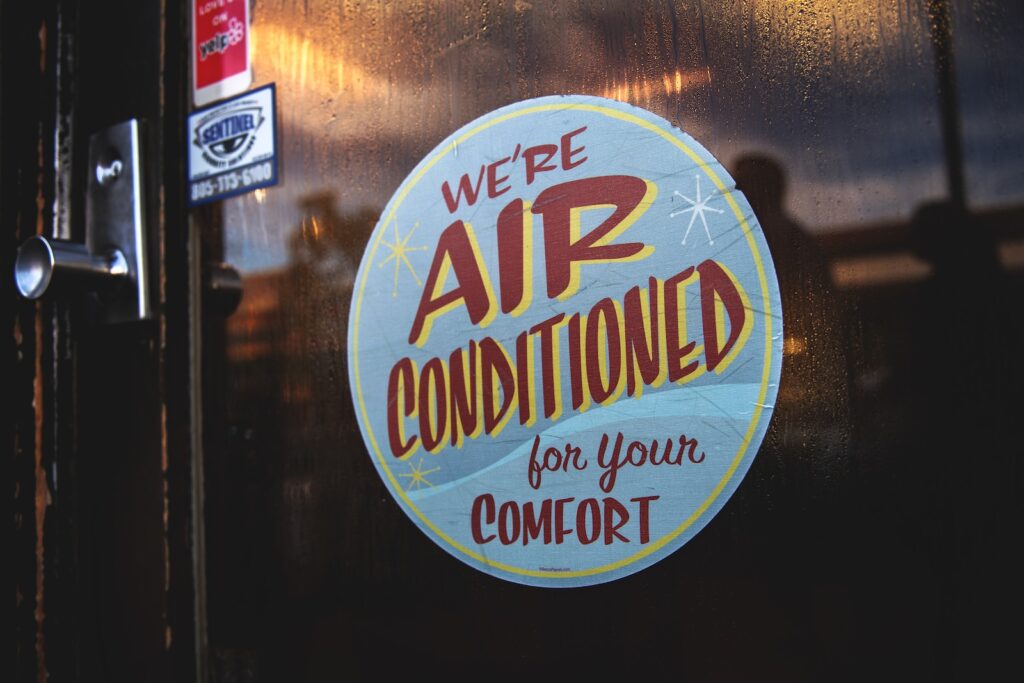Rated & Reviewed is reader-supported. When you buy through links on our site, we may earn an affiliate commission. Learn more.
Indoor air quality plays a crucial role in our health and well-being. While the naked eye may perceive air as empty, it’s teeming with microscopic particles that can impact our respiratory health, trigger allergies, and even affect cognitive function. This article delves into the intricate science behind air purification, shedding light on the pollutants we encounter daily and the innovative technologies that strive to create cleaner, safer indoor environments.
Common Indoor Pollutants: What’s in the Air We Breathe?
As we go about our daily lives, we unknowingly interact with a multitude of indoor pollutants. Dust mites, pollen, pet dander, and volatile organic compounds (VOCs) are among the most prevalent culprits. These particles, some visible and others invisible to the naked eye, can be detrimental to our health. Dust and pollen trigger allergies, while VOCs released by household products and materials contribute to respiratory distress and other health issues. Recognizing these pollutants and their potential consequences underscores the importance of effective air cleaning strategies.

How Air Purifiers Work: Breaking Down the Process
The magic of air purification lies in its multifaceted approach. Air purifiers employ a combination of mechanisms to ensure the air we breathe is as clean as possible. At the core of this process are the filters. As air is drawn into the purifier, these filters work in tandem to capture pollutants. The powerful fan enhances airflow, ensuring that airborne particles are efficiently trapped. Some advanced models go a step further by incorporating UV-C or ionization technologies to augment the purification process. Understanding this mechanism empowers us to appreciate the meticulous effort behind achieving pristine indoor air quality.
Types of Air Purifier Filters: What They Target
Different air purifiers use various filters to target specific pollutants. Here are some common filter types:
- HEPA Filters: Highly efficient in capturing particles as small as 0.3 micrometers, HEPA filters excel at removing dust, pollen, pet dander, and even some bacteria from the air.
- Activated Carbon Filters: These filters are adept at removing odors, smoke, and VOCs. The porous structure of activated carbon absorbs these molecules, leaving the air fresher.
- UV-C Filters: Utilizing ultraviolet light, these filters can neutralize microorganisms like bacteria and viruses by disrupting their DNA.
Comparison of Air Purifier Filter Types
| Filter Type | Target Pollutants | Advantages | Considerations |
|---|---|---|---|
| HEPA Filters | Dust, pollen, pet dander, bacteria | Highly effective particle removal | Regular filter replacement required |
| Activated Carbon Filters | Odors, volatile organic compounds | Excellent at adsorbing gases and odors | Limited impact on particle removal |
| UV-C Technology | Bacteria, viruses, microorganisms | Effective at neutralizing microorganisms | Limited impact on particle removal |
Air purifiers leverage an array of filter types, each with a specific mission. The variety of filters available allows for a tailored approach to addressing different pollutants. HEPA filters, known for their high efficiency, are adept at capturing particles as minuscule as 0.3 micrometers.
Activated carbon filters focus on adsorbing odors and volatile organic compounds, making them indispensable for creating a fresher ambiance. UV-C technology takes a different route, disrupting the genetic material of microorganisms to render them inactive. The diversity of filter options emphasizes the versatility of air purifiers in combatting a wide spectrum of pollutants.
HEPA Filters: The Gold Standard in Particle Filtration
High Efficiency Particulate Air (HEPA) filters stand as a testament to cutting-edge filtration technology. Their intricate construction, composed of densely woven fibers, efficiently captures particles as tiny as 0.3 micrometers. This remarkable feat ensures that even the tiniest allergens, bacteria, and viruses are arrested within the filter’s grasp. For allergy sufferers, HEPA filters represent a beacon of relief, as they substantially reduce allergen exposure and contribute to a healthier indoor environment. Understanding the exceptional capabilities of HEPA filters aids us in making informed choices when selecting air purifiers.
Activated Carbon Filters: Tackling Odors and VOCs
While particles are a primary concern, odors and volatile organic compounds (VOCs) also play a significant role in indoor air quality. Activated carbon filters take center stage in eliminating these unwelcome odorous intruders. The secret lies in the carbon’s porous structure, which acts like a sponge for gases and volatile molecules. Cooking smells, tobacco smoke, and chemical fumes are no match for the adsorption prowess of activated carbon filters. By addressing these olfactory offenders, activated carbon filters contribute to a fresher and more inviting living space.
UV-C Technology: Disrupting Microorganisms
The invisible world of microorganisms presents a unique challenge in air purification. Bacteria, viruses, and other microorganisms can wreak havoc on our health. Enter UV-C technology, a game-changer in neutralizing these unseen threats. This technology employs ultraviolet light with a wavelength between 200 and 280 nanometers to disrupt the genetic material of microorganisms. By damaging their DNA, UV-C light renders these pathogens incapable of reproduction and effectively eliminates them. While UV-C technology is a powerful tool, it’s essential to consider its proper implementation to ensure optimal results.
Combination of Technologies: Enhanced Purification
In the quest for optimal indoor air quality, some air purifiers merge multiple technologies to create a comprehensive purification solution. By combining HEPA filters, activated carbon filters, and UV-C technology, these devices offer a multi-layered approach to tackling pollutants. HEPA filters capture particles, activated carbon filters adsorb odors and VOCs, and UV-C technology neutralizes microorganisms. This combination provides a robust defense against a broad spectrum of indoor air contaminants. For those seeking enhanced purification, these multifunctional air purifiers offer a holistic approach.
Evaluating Air Purifier Effectiveness: What Matters?
Effectively evaluating the efficiency of air purifiers necessitates considering the Clean Air Delivery Rate (CADR). This metric measures the volume of clean air a purifier can deliver in a given period.
Clean Air Delivery Rate (CADR) Recommendations
| Room Size (Square Feet) | CADR Recommendations (cfm) |
|---|---|
| Small (100-300 sq. ft.) | 100-160 for dust, 100-200 for smoke, 100-200 for pollen |
| Medium (300-600 sq. ft.) | 160-260 for dust, 160-320 for smoke, 160-320 for pollen |
| Large (600+ sq. ft.) | 260-400 for dust, 260-400 for smoke, 260-400 for pollen |
Different CADR values are recommended for various room sizes to ensure efficient air cleaning. A higher CADR indicates quicker air purification and better performance. By understanding CADR, consumers can confidently choose air purifiers that match their room dimensions and air quality needs, making their selection process more informed and effective.
Wrapping Up The Science of Air Purification
The science behind air purification unveils a realm of innovation and precision. From the intricacies of HEPA filters to the disruptive power of UV-C technology, each component plays a pivotal role in creating healthier indoor environments. Armed with knowledge about these mechanisms, consumers are better equipped to navigate the world of air purifiers. By making informed choices, individuals can select air purifiers that align with their specific needs, paving the way for cleaner, fresher, and safer.
FAQs About The Science of Air Purification
How do air purifiers work to clean indoor air?
Q: I’m curious about the mechanics of air purifiers. How do they actually work to clean the air in indoor spaces?
Are there specific pollutants that air purifiers can’t remove?
Q: While air purifiers seem effective, are there any types of pollutants they might struggle to capture?
What is the significance of HEPA filters in air purification?
Q: I’ve heard a lot about HEPA filters. What makes them stand out and why are they considered so effective?
Can activated carbon filters remove strong odors like cooking smells?
Q: I’m dealing with persistent cooking odors. Can activated carbon filters effectively eliminate such strong smells?
How does UV-C technology neutralize microorganisms?
Q: UV-C technology sounds intriguing. How exactly does it work to neutralize bacteria and viruses?
Do air purifiers using multiple technologies offer better performance?
Q: I’ve come across air purifiers with multiple technologies. Do these combination devices provide enhanced air cleaning?
What is the Clean Air Delivery Rate (CADR)?
Q: I’ve heard of CADR, but I’m not sure what it signifies. Could you explain what the Clean Air Delivery Rate is?
How do I determine the right CADR for my room size?
Q: I want to choose an air purifier with the right CADR for my room. How do I figure out the appropriate CADR for my space?
Are there air purifiers suitable for large open spaces?
Q: I’m looking to improve air quality in a large open area. Are there air purifiers specifically designed for such spaces?
Can I use UV-C air purifiers without any concerns about exposure?
Q: UV-C air purifiers sound effective, but should I have any concerns about UV-C exposure, especially if I have pets or children?
Amazon and the Amazon logo are trademarks of Amazon.com, Inc, or its affiliates.


